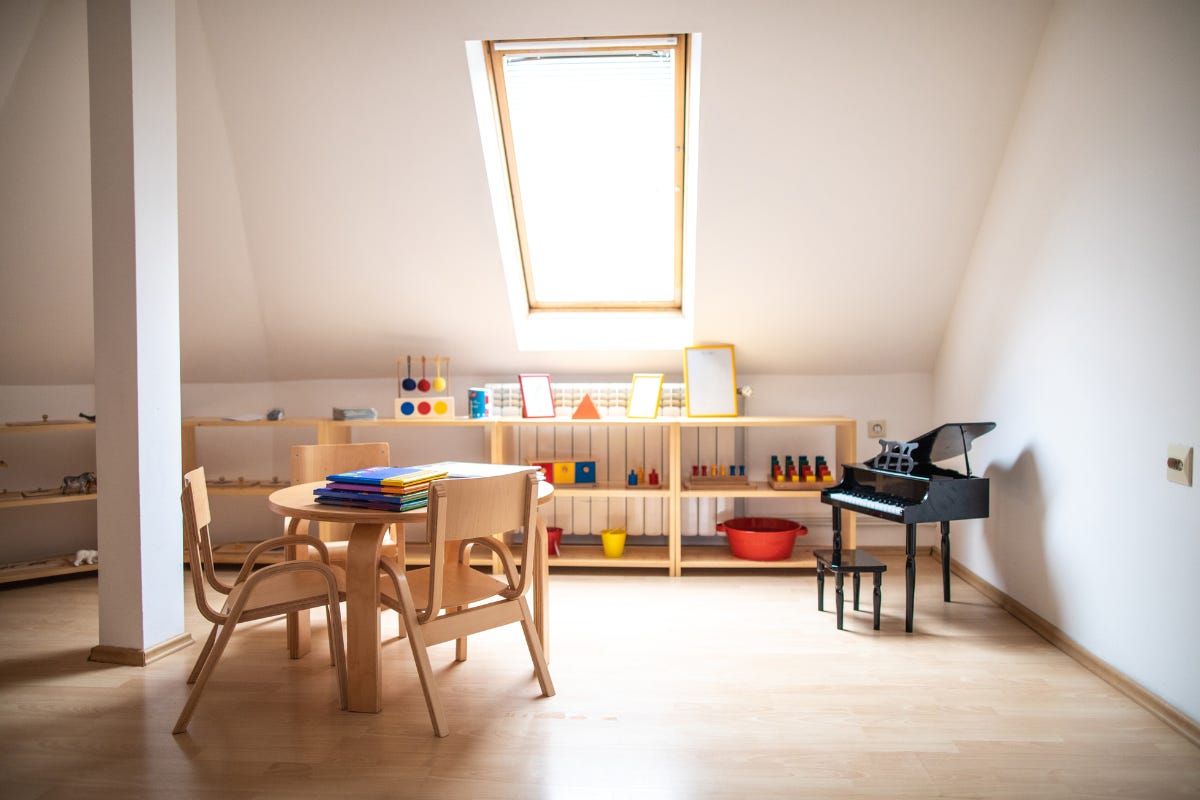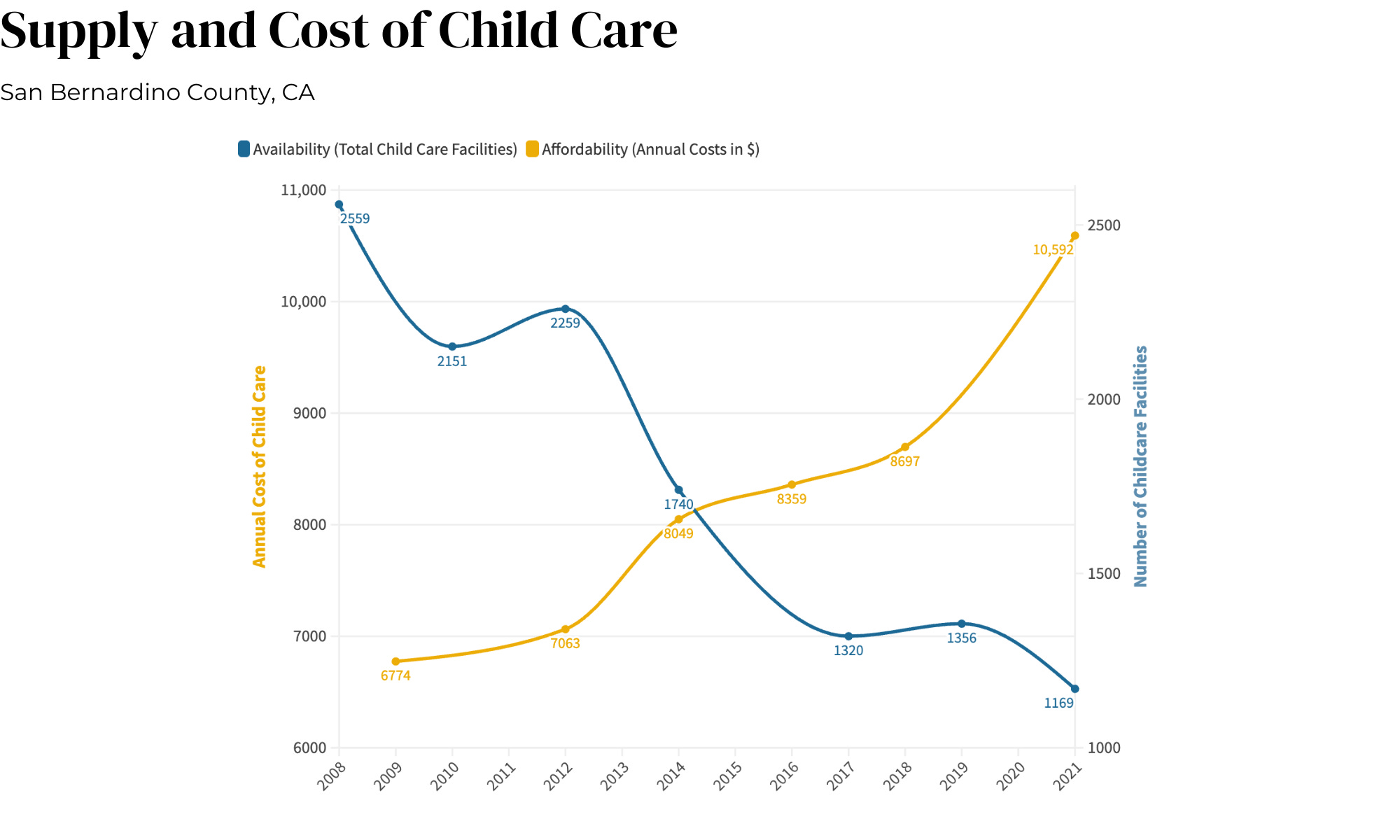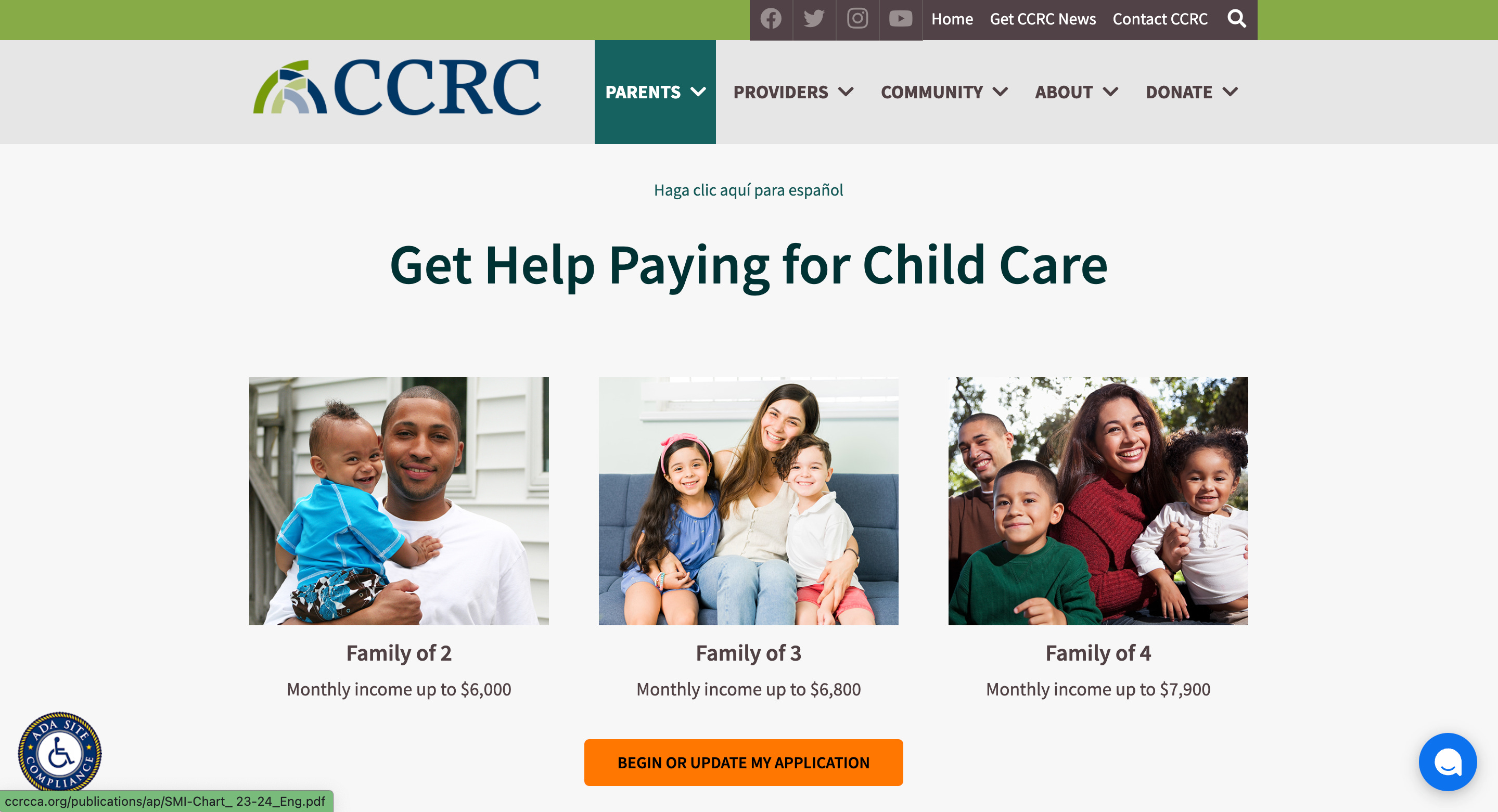Redlands City Council agenda: July 1, 2025
Agenda includes a vote on the Climate Action Plan 2050, Housing Element zoning updates and new Fire Hazard Severity Zones.
A look at how dwindling supply and rising costs have led to a child care crisis here in Redlands and across the county

"It’s incredibly expensive and difficult to secure."
"It's a struggle."
"Few options."
"Stressful."
Parents in and around Redlands used these words when asked to provide their experience accessing affordable and high-quality child care services.
In a recent survey by Community Forward Redlands, we asked parents about their monthly child care costs and experience finding and securing a spot. Their responses reflect the pain of a growing national child care crisis. Parents pay thousands in costs, that is, if they can find a spot, while providers live off poverty-level wages.
This newsletter looks at:
What local parents have to say about the cost and availability of child care
How local responses reflect a larger trend (and why things will likely get worse before they get better)
Plus, what resources are available to help parents find and pay for child care
And local solutions to address the widespread need for child care in Redlands.

Responses to our child care survey touched on three major issues with child care - high cost, lack of options, and limited resources. Respondents also highlighted the impact that juggling limited childcare options has on work and stress levels.
Several responses mentioned the challenges of child care affordability. About 70% of parents say child care causes some or a lot of stress on their budget.
On average, parents who completed the survey spend around $1900/month for two or more children. While families with one child under the age of 7 reported spending an average of $1375/month. That equates to about $11,000/year per child.
"The first place my partner and I were comfortable sending our child ran about $1500/month for full-time care. Cheaper options were depressing environments and often had poor adult-to-child ratios. Our child started daycare at 4 months as we both work full time and have no family support," explained one parent.
The scarcity of childcare providers and the difficulty of securing a spot were also a concern of parents. Most respondents (77%) considered their experience securing quality affordable child care "challenging" or "somewhat challenging."
"Child care centers seem to have an enormous amount of power. You're put on these wait-lists, and if you don't continuously follow up, you never get contacted," wrote one respondent.
Other parents shared concerns over high turnover rates at daycare centers and a lack of quality care. One parent found that with lower prices comes lower quality of care.
"The child care I have found that I can afford, he would be a neglected kid there, so I refuse to send him."
And while infant and preschool childcare programs can be difficult to access, parents found that there are even fewer options for school-aged children.
The need for a central resource or support system is also mentioned, with parents relying on word-of-mouth recommendations to navigate the childcare landscape.
Others rely on the assistance of grandparents or family members to fill in the gaps in care.
"We are lucky to have grandparents who contribute to help with childcare but it's a struggle," explained one respondent.
Many parents express their stress and difficulties in balancing work and child care responsibilities.
"I am constantly scrambling to piece together child care," wrote one parent.
The lack of affordable and reliable child care options often forces parents to make sacrifices or compromises in their professional lives.
"I used to have child care. Prepandemic. When I was scheduled to go back to work, her prices doubled. So, I negotiated to work from home while having a toddler run around. It was incredibly stressful, and many times I wondered if I could keep doing it."
This parent wrote in the survey that soon their child will start half-day kindergarten, "that will give some space to work with no interruptions, but this has still caused a lot of stress."
Two parents reported the high cost of child care prevented them from entering the workforce at all. They're not alone. A study released by the Annie E. Casey Foundation this summer found that in 2021 roughly one in seven children in California live in households where parents have had to terminate, modify, or reject a job due to child care concerns. This impact on employment is not equally shared. For Black and Latino kids ages five and under, the percentage is even higher. And according to researchers, women are five to eight times more likely to incur a "caregiving impact" on employment. Reduced employment hours and time out of the workforce significantly impact a woman's lifetime earnings.
The sentiments of survey respondents align with larger trends that show both an increase in childcare costs and a decline in supply.
In San Bernardino County, child care providers have dropped by nearly half since 2008. Meanwhile, the yearly cost of child care has increased by 63% for preschool-age care.

Parents in need of care for infants will pay about 30% more. The average cost for infant care at a child care center in San Bernardino County in 2021 was $15,591/year. Up nearly a quarter since 2019.
The price for care in a home-based center is less expensive (about $12,000/year), but even that has gone up (40%) from the pre-pandemic cost ($9,000/year).
At these rates, the annual cost of infant child care is about a tenth (12%) of a couple's median income in Redlands and about one-quarter (26%) of a single parent's income in Redlands.
Despite the large price parents pay, child care providers struggle to keep their doors open.
Megan Sack, Media and Communications Specialist with The Child Care Resource Center (CCRC) explained that San Bernardino County is considered a “child care desert.” That means the number of slots does not equate to the number of children needing care.
Sack explained how the expenses associated with caring for young children often become too burdensome for providers to stay in business.
"Child care providers are an underfunded and under-resourced career choice. We try to best support providers through advocacy because they are not making enough money to keep their child care businesses open."
The Covid-19 pandemic lockdown sparked a closure of child care centers that has yet to recover.
In San Bernardino County, child care providers declined 14% overall from 2019-2021. Local home-based child care saw an even sharper decline of 22%. San Bernardino County experienced a loss of family home child care centers at a rate 5x higher than the State of California.
"It brought to light the struggle of child care providers to make ends meet," said Sack.
Sack points out that most child care providers are making an under-poverty wage of about $27,000/year if they operate family-based child care. Low wages and uncertain work conditions lead to more turnover and less reliable care.
A major part of CCRC work is to provide professional development opportunities and resources to help providers navigate opening and running their businesses.
The group also works in Sacramento to advocate for providers and parents. This past Spring, the CCRC backed two bills to improve pay for child care workers and increase access to quality care for parents.
One bill, introduced by Assembly Majority Leader Eliose Gomez Reyes (AB 596), works to increase subsidy payment rates for child care and early development services.
The other (AB 51) focuses on expanding the State's "mixed delivery system" as universal TK opens up free slots for 4-year-olds across the State.
"What that means is... there has to be a 'mixed delivery system' because those hours aren't going to cover everybody's needs." Sack explained the bill answers the question of, "How do we connect those attending preschool with a private provider in the afternoon if the child needs full-day care?"
In June, Child Care Providers United and Education Workers United rallied at the State Capitol to support these bills.
In addition to supporting providers, the CCRC provides resources and education for parents to find and pay for child care services.
"We are well aware of how taxing it is to fund child care, particularly for infancy."
Sack explains that CCRC helps parents answer three questions: What are my options, is there availability, and how will I pay for it?
Parents can search for providers at the CCRC referral portal. There are ways to lessen the burden of child care on families. Sack explained that many families do not know about the financial assistance available. Some of these include:

The problem is about to get worse. On September 30, 2023 Covid-area federal funding for child care is expected to expire. Without action from Congress, an estimated 84,000 children will lose child care access in California. And an additional 13,500 child care programs are expected to close across the state, according to data from The Century Foundation.
The crisis of affordable quality child care access is at the forefront of a recent report by the Annie E. Casey Foundation. As part of its 2023 Kids Count Data Book, ACF encourages policymakers to act by investing money and improving infrastructure.
"America has never had a functional child care system. It is past time for our leaders to build one."
Increase funding: The report suggests that State and local governments should maximize the remaining pandemic-era America Rescue Plan Act dollars to fund child care services. It also recommends efforts to simplify the process of qualifying for and receiving subsidies.
Improve infrastructure for home-based child care: The report recommends improvements to the infrastructure for home-based child care, such as increasing access to startup and expansion capital for new providers and looking for ways to better support those already in operation. Cities can also remove unnecessary obstacles to opening home child care businesses.
When child care is seen as a necessary infrastructure, the role of local and state governments becomes more apparent. An example of local efforts to improve access to child care can be seen in the Northern California community of Redwood City. The City's Parks and Recreation Division serves as a resource center for parents to find and pay for care from infants to school-aged kids. Kristen Anderson, a city planner and policy consultant who originally ran the robust program, envisioned community-based child care solutions leveraging state and federal funding.
In her 2006 book Planning for Child Care in California, Anderson laid out how child care infrastructure should be considered in a city's general plan and zoning laws.
A city's child care coordinators and planners can support building the supply of child care centers, quality improvement, and parent access by:
Other solutions outlined in her work include employer-provided child care benefits and developing municipal child care centers, as seen in San Diego.
In Redlands, most children (68%) live in households where all available parents are in the workforce. In an economy where home prices are nearly 8x the median family income, wage trends are flat, and inflation has depleted household savings, the number of dual-income families is expected to rise.
The question is whether policymakers will find a way to support families and caregivers.
One parent who responded to our survey put it this way:
"It is understandable that birth rates are down in the US with child care being so incredibly expensive and difficult to secure. I truly believe that government-sponsored childcare would strengthen the ability for a huge swath of citizens (parents) to be able to better contribute to the workforce."
This post is public, so feel free to share it.
Sign up for our weekly newsletter